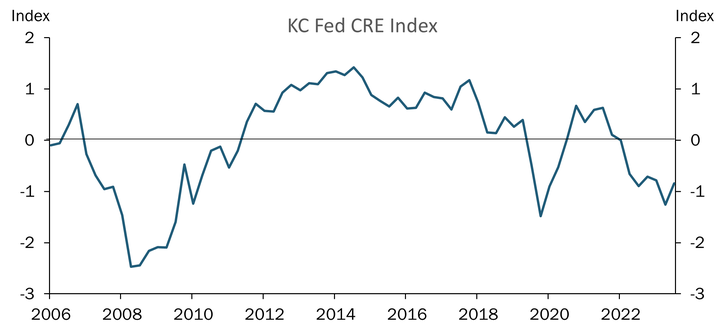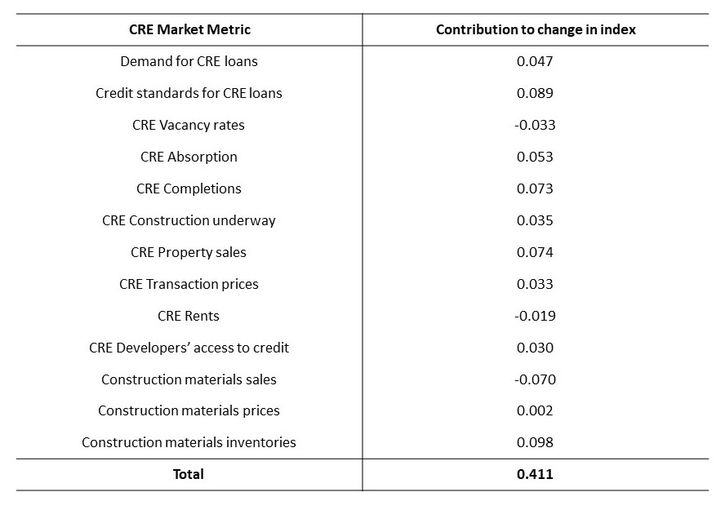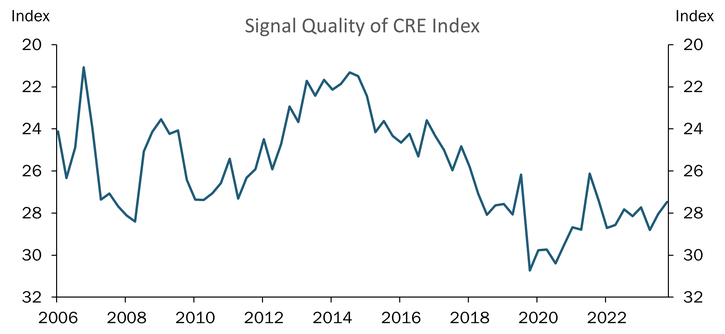Commercial Real Estate Activity in the Tenth District Stabilized at Low Level
The Federal Reserve Bank of Kansas City released its KC Fed CRE Index for the second quarter of 2024 today. After declining for several consecutive quarters, the value of the index rose slightly from -1.3 to -0.85, indicating commercial real estate activity in the region stabilized during the first part of the year, albeit at a low level.
“Many aspects of commercial real estate activity across the region stopped declining in recent months, but the recent pick up in vacancy rates kept downward pressure on rents. Though the downward slide in CRE conditions seemed to slow through March, few signs of improvement emerged during the first part of the year,” according to Nicholas Sly, vice president at the Federal Reserve Bank of Kansas City.
Chart 1: The KC Fed CRE Index stabilized, but activity was below historical norms

Note: An index value of zero corresponds to overall conditions being at their historical average and differences from zero are measured in terms of standard deviations from the historical norm.
Table 1: Primary drivers change in the current KC Fed CRE Index

Notes: Contributions may not add to total change in index due to rounding. The contribution of each metric is calculated as the change in the standardized value of the variable from the previous quarter multiplied by the coefficient of the variable in the index.
Chart 2: Contacts agreed more on their recent reports of market conditions, improving signal quality of the KC CRE Index

Note: Values correspond to measures of Shannon entropy, with higher numerical values indicating more mixed responses and lower signal quality of the KC Fed CRE Index.
